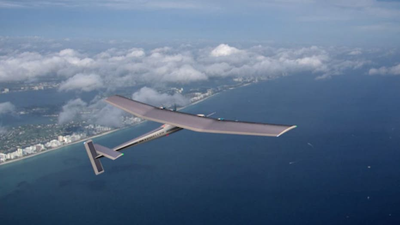
Introduction: The Dawn of a New Era in Solar-Powered Aviation
Skydweller Aero has recently made history by successfully completing a series of uncrewed autonomous flight tests, marking a significant milestone in the development of solar-powered aircraft. This achievement showcases the potential for prolonged surveillance and remote communication solutions, offering cost-effective and environmentally friendly alternatives to traditional aviation methods.
Background: The Skydweller Story
The Skydweller's success story is built upon the legacy of the Solar Impulse, a pioneering solar-powered aircraft that successfully circumnavigated the globe. This heritage provides the Skydweller with a robust design capable of carrying substantial payloads, showcasing its ability to stay airborne for extended periods using solar energy and batteries.
Key Features: What Sets Skydweller Apart?
The Skydweller's impressive wingspan of 236 feet makes it larger than a Boeing 747, yet it weighs just 5,620 pounds – roughly the same weight as a Ford F-150. This unique combination allows the aircraft to carry up to 800 pounds of payload, making it an ideal platform for various applications.
Maritime Patrol and Surveillance: A Game-Changer in National Security Efforts
The Navy has shown significant interest in Skydweller's potential, with recent flight tests conducted as part of a Joint Concept Technology Demonstration. This initiative aims to evaluate autonomous maritime patrol aircraft, leveraging Skydweller's ability to remain airborne for extended periods and provide round-the-clock coverage.
Comprehensive Surveillance Capabilities
Skydweller Aero's uncrewed, autonomous solar-powered aircraft offers continuous surveillance capabilities, enhancing maritime border security and monitoring illegal fishing activities. The aircraft's long endurance enables round-the-clock coverage, significantly bolstering national security efforts and providing valuable insights into environmental protection initiatives.
Communication Solutions: Bridging the Gap in Remote Areas
Skydweller Aero serves as a non-traditional airborne communication platform, complementing satellite networks. CEO Robert Miller envisions a future where solar-powered aircraft could provide continuous coverage in specific regions, offering cost-effective and environmentally friendly solutions for remote communication.
Scientific Research and Environmental Protection: Unlocking the Potential of Solar-Powered Aviation
The Skydweller's ultra-long endurance and remote access capabilities make it an invaluable asset for environmental and scientific research. From climate and wildfire monitoring to geophysical surveys, the aircraft enables meaningful, long-baseline data collection across vast regions, contributing significantly to environmental protection efforts.
Challenges Ahead: Overcoming Obstacles in Widespread Implementation
While challenges remain, Skydweller's recent successful test flights demonstrate just how far solar aviation technology has advanced. The widespread implementation of solar-powered aircraft technology will depend on overcoming current obstacles and harnessing the expertise required to ensure these aircraft can withstand flight stresses.
Conclusion: A New Era in Aviation
The Skydweller's historic flight milestone marks a significant breakthrough in the development of solar-powered aircraft. As the world's largest unmanned solar aircraft, it has opened up exciting new possibilities for various applications – from enhancing maritime patrols to serving as airborne communication platforms. With continued innovation and expertise, the potential for widespread implementation of solar-powered technology will become increasingly feasible.